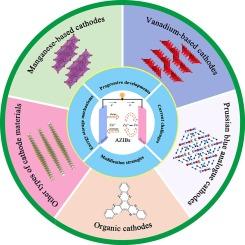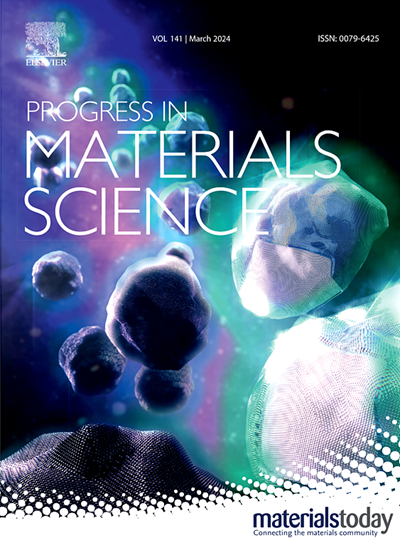Advances in aqueous zinc-ion battery systems: Cathode materials and chemistry
IF 33.6
1区 材料科学
Q1 MATERIALS SCIENCE, MULTIDISCIPLINARY
引用次数: 0
Abstract
Renewable energy has been extensively developed to curb the greenhouse effect and reduce carbon dioxide emissions. Nevertheless, their applications are greatly limited due to the intermittence and instability nature. Therefore, reasonably store and distribution of new energy have become a widespread concern. Among various energy storage technologies, lithium-ion battery technology has achieved great success, but the scarcity of lithium resources and the use of toxic and flammable organic electrolytes have limited its further development. Oppositely, aqueous zinc ion batteries (AZIBs) have advantages of safety, abundant resources, low cost, and the potential to store energy at the power plant level. However, the low capacity, poor cycle stability, and low voltage of cathode materials have become one of the limiting factors for the application of AZIBs. Herein, we systematically summarize and discuss the reported cathode materials, including manganese-based oxides, vanadium-based compounds, Prussian blue analogues, organics, MXenes, transition metal chalcogenides, layered double hydroxides, and others. Their developments, challenges, and feasible modification strategies are thoroughly analyzed. In addition, we also summarize and compare the proposed energy storage mechanisms of cathode materials. Finally, we propose potential research directions in the future for cathode materials, and provide essential guidance for the development of high-performance AZIBs.

锌离子水电池系统的进展:阴极材料和化学
为遏制温室效应和减少二氧化碳排放,可再生能源得到了广泛开发。然而,由于其间歇性和不稳定性,其应用受到很大限制。因此,新能源的合理储存和分配成为人们普遍关注的问题。在各种储能技术中,锂离子电池技术已经取得了巨大成功,但锂资源的稀缺性和有毒易燃有机电解质的使用限制了其进一步发展。相反,锌离子水电池(AZIBs)具有安全、资源丰富、成本低廉等优点,并有可能在发电厂一级储存能量。然而,正极材料的低容量、循环稳定性差和低电压已成为限制 AZIBs 应用的因素之一。在此,我们系统地总结和讨论了已报道的阴极材料,包括锰基氧化物、钒基化合物、普鲁士蓝类似物、有机物、MXenes、过渡金属瑀、层状双氢氧化物等。我们对它们的发展、挑战和可行的改性策略进行了深入分析。此外,我们还对提出的阴极材料储能机制进行了总结和比较。最后,我们提出了阴极材料未来的潜在研究方向,并为高性能 AZIB 的开发提供了重要指导。
本文章由计算机程序翻译,如有差异,请以英文原文为准。
求助全文
约1分钟内获得全文
求助全文
来源期刊

Progress in Materials Science
工程技术-材料科学:综合
CiteScore
59.60
自引率
0.80%
发文量
101
审稿时长
11.4 months
期刊介绍:
Progress in Materials Science is a journal that publishes authoritative and critical reviews of recent advances in the science of materials. The focus of the journal is on the fundamental aspects of materials science, particularly those concerning microstructure and nanostructure and their relationship to properties. Emphasis is also placed on the thermodynamics, kinetics, mechanisms, and modeling of processes within materials, as well as the understanding of material properties in engineering and other applications.
The journal welcomes reviews from authors who are active leaders in the field of materials science and have a strong scientific track record. Materials of interest include metallic, ceramic, polymeric, biological, medical, and composite materials in all forms.
Manuscripts submitted to Progress in Materials Science are generally longer than those found in other research journals. While the focus is on invited reviews, interested authors may submit a proposal for consideration. Non-invited manuscripts are required to be preceded by the submission of a proposal. Authors publishing in Progress in Materials Science have the option to publish their research via subscription or open access. Open access publication requires the author or research funder to meet a publication fee (APC).
Abstracting and indexing services for Progress in Materials Science include Current Contents, Science Citation Index Expanded, Materials Science Citation Index, Chemical Abstracts, Engineering Index, INSPEC, and Scopus.
 求助内容:
求助内容: 应助结果提醒方式:
应助结果提醒方式:


